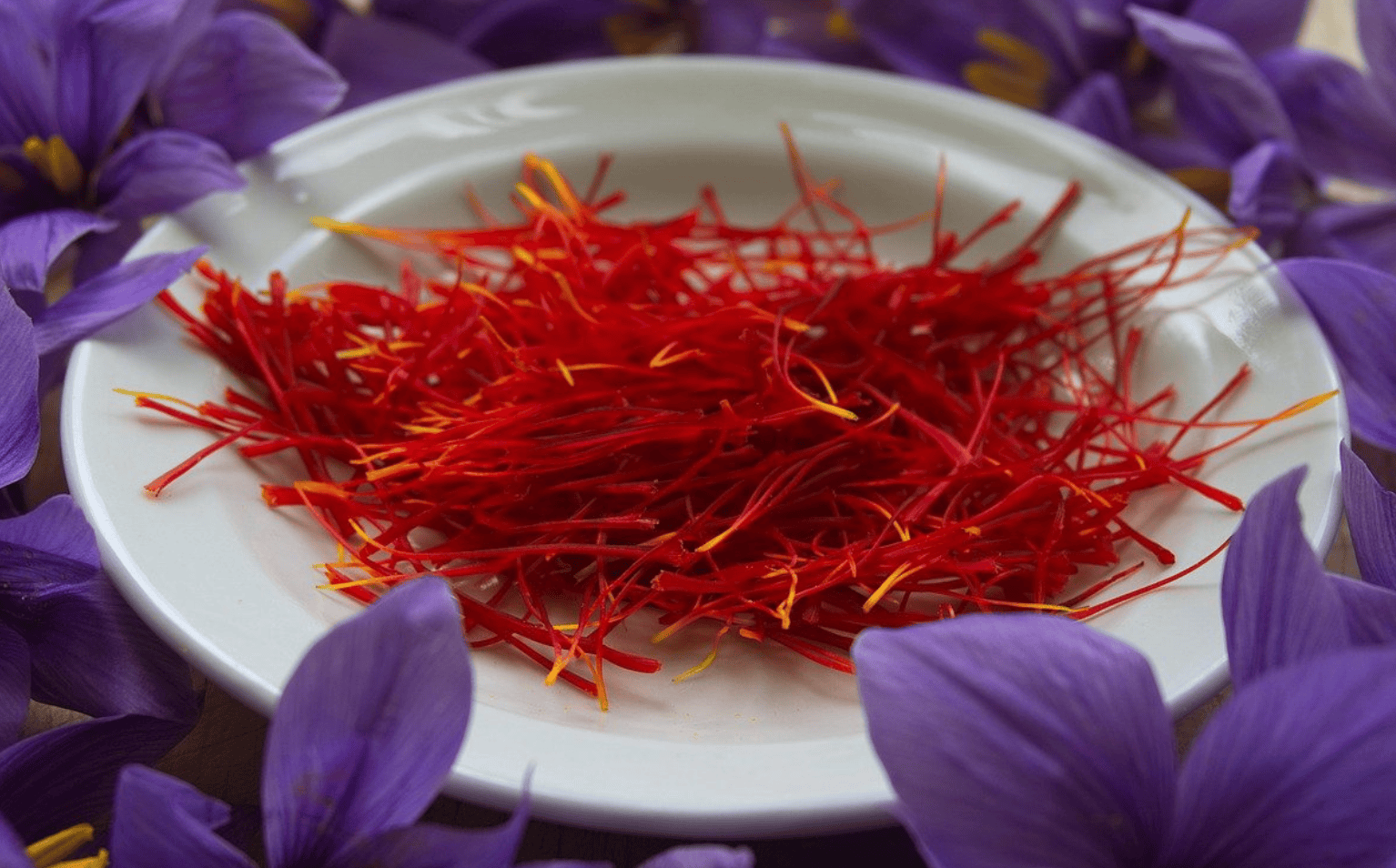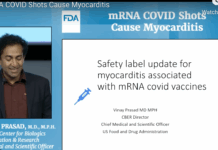While powerful stimulant medications remain the standard treatment for attention deficit hyperactivity disorder (ADHD), the spice saffron has been found to offer comparable efficacy — with the added benefit of better sleep
A groundbreaking study published in the journal Nutrients found a botanical extract of the ancient spice saffron works as well as methylphenidate (brand names Ritalin and Concerta) to treat attention deficit hyperactivity disorder (ADHD) in children and adolescents.[i]
In the U.S., millions of children have been diagnosed with ADHD, including 3.3 million 12- to 17-year-olds, 2.4 million 6- to 11-year-olds and even 265,000 3- to 5-year-olds.[ii] The percentage of those taking powerful medications as a result varies by state, but ranges from 38% to 81% of those diagnosed.[iii] Overall, however, it’s estimated that 62% of children with ADHD take ADHD medications.
Side effects from these drugs can be steep and include weight loss, difficulty sleeping and anxiety, along with a rebound effect, in which fatigue, poor mood or increased activity occur as the medication wears off. Other side effects include tics, growth delays, stomach problems and changes in blood pressure and heart rate.[iv]
As noted by the study authors, while psychostimulants remain a go-to treatment for ADHD, “parents tend to be reluctant to administer them due to side effects, and alternatives are needed.”[v] Saffron, it turns out, may provide one valuable option.
Efficacy of Saffron for ADHD ‘Comparable’ to Ritalin
The study involved children and adolescents with ADHD, aged 7 to 17 years. Group 1 received psychoeducation and extended-release methylphenidate while group 2 received psychoeducation and saffron at a dosage of 30 milligrams (mg) a day for three months.
Interestingly, while those taking methylphenidate, which can cause sleep disturbances, took the dose in the morning, those taking saffron consumed it in the evening due to “the well-known properties of saffron in improving sleep quality, latency, and duration.”[vi]
Both treatments led to statistically significant improvements in core ADHD symptoms and executive functions, which include inhibition, working memory, multitasking and the ability to monitor one’s own actions.
The improvements were “comparable in terms of efficacy, measured with both pen-and-paper tests filled out by parents, and objective measures.” While no significant side effects were reported in either group, those taking saffron enjoyed an additional benefit of better sleep.
According to the study, “A pronounced difference was found in the saffron arm, in the sense that the parents of the children treated with saffron reported a pronounced improvement in the time to fall asleep.”[vii] What’s more, the study found saffron tended to be more effective than methylphenidate for treating hyperactivity.
Saffron’s Psychoactive Properties
Saffron is the dried stigmas from saffron crocus (crocus sativus). Well-known for its anti-inflammatory and antioxidant properties, it’s been used as a remedy for chronic diseases including rheumatoid arthritis, inflammatory bowel diseases, Alzheimer’s disease and cancers of the colon, stomach, breast, lung and skin.[viii]
In addition to showing promise for modulating high blood pressure and improving lipid profile, saffron compounds such as crocin, picrocrocin and safranal appear to have protective effects on the central nervous system, along with psychoactive properties. Crocetin, for instance, is known to penetrate the blood-brain barrier to reach the central nervous system, leading researchers to suggest it can be effective for neurodegenerative disorders.[ix]
Further, saffron has antidepressant and antianxiety properties, which researchers suggest are “similar to those of current antidepressant medications such as fluoxetine, imipramine and citalopram, but with fewer reported side effects.”[x] Saffron affects NMDA and GABA receptors in the brain, leading to the secretion of dopamine, serotonin and noradrenaline. According to the Nutrients study authors:[xi]
“Given that, first, both dopamine and noradrenaline are the core neurotransmitters associated with ADHD, and second, saffron extract is a safe, natural substance, thus alleviating parental fears regarding the stimulant-drug based treatment of ADHD, it seems plausible to test whether saffron has some potential to treat ADHD.”
At GreenMedInfo.com, you can find 141 diseases that saffron may benefit, which include not only depression, anxiety and Alzheimer’s disease but also Type 2 diabetes, erectile dysfunction and macular degeneration, among others.
Saffron Has Previously Shown Promise for ADHD Relief
The Nutrients study was non-randomized, meaning participants were able to choose which treatment group — saffron or methylphenidate — they wanted to be in. This increases the risk of selection bias, which is one of the study’s limitations. However, this isn’t the first time saffron has been highlighted for ADHD treatment. In 2019, a six-week randomized double-blind study found similar benefits for saffron on ADHD.[xii]
The participants were randomly assigned to receive either 20 to 30 mg of saffron or 20 to 30 mg of methylphenidate (depending on weight) per day. Both treatments worked equally well, suggesting saffron was as effective as Ritalin for ADHD. “This study provides evidence for satisfactory outcomes with saffron in treatment of ADHD,” the researchers noted, adding that saffron contains nearly 150 different components.
In addition to offering benefits for ADHD, saffron has at least 75 known pharmacological actions, including antitumor properties and radical scavenging capabilities. Saffron may be useful for enhancing learning, memory and sexual activity, while offering benefits for schizophrenia and Parkinson’s disease, along with anticonvulsant effects.[xiii]
At GreenMedInfo.com, you can also explore other natural remedies for ADHD. Beyond saffron, a dozen other substances also show promise for symptom relief, including omega-3 fats, magnesium, bacopa and cannabis. Therapeutic actions, like exercise, mindfulness training and dietary modifications, are also explored at our ADHD research page.
The good news for those suffering with difficulty concentrating, mood swings, short attention span and other ADHD symptoms is that help is out there — and it doesn’t have to involve stimulant medications with side effects that may be worse than the condition they’re treating. Herbs like saffron — valued for its medicinal properties for more than 4,000 years — deserve a closer look for their potential to help ADHD and other modern-day ailments.
References
[i] Nutrients. 2022 Oct; 14(19): 4046. https://www.ncbi.nlm.nih.gov/pmc/articles/PMC9573091/
[ii] U.S. CDC, Data and Statistics About ADHD https://www.cdc.gov/ncbddd/adhd/data.html
[iii] U.S. CDC, Data and Statistics About ADHD https://www.cdc.gov/ncbddd/adhd/data.html
[iv] Cleveland Clinic, ADHD Medication https://my.clevelandclinic.org/health/treatments/11766-adhd-medication
[v] Nutrients. 2022 Oct; 14(19): 4046. https://www.ncbi.nlm.nih.gov/pmc/articles/PMC9573091/
[vi] Nutrients. 2022 Oct; 14(19): 4046.https://www.ncbi.nlm.nih.gov/pmc/articles/PMC9573091/
[vii] Nutrients. 2022 Oct; 14(19): 4046. https://www.ncbi.nlm.nih.gov/pmc/articles/PMC9573091/
[viii] Nutrients. 2022 Oct; 14(19): 4046. https://www.ncbi.nlm.nih.gov/pmc/articles/PMC9573091/
[ix] Eur J Drug Metab Pharmacokinet. 2018 Aug;43(4):383-390. doi: 10.1007/s13318-017-0449-3. https://pubmed.ncbi.nlm.nih.gov/29134501/
[x] J Affect Disord. 2018 Feb;227:330-337. doi: 10.1016/j.jad.2017.11.020. Epub 2017 Nov 7. https://pubmed.ncbi.nlm.nih.gov/29136602/
[xi] Nutrients. 2022 Oct; 14(19): 4046. https://www.ncbi.nlm.nih.gov/pmc/articles/PMC9573091/
[xii] Journal of Child and Adolescent Psychopharmacology. April 3, 2019 https://www.liebertpub.com/doi/10.1089/cap.2018.0146
[xiii] Journal of Child and Adolescent Psychopharmacology. April 3, 2019 https://www.liebertpub.com/doi/10.1089/cap.2018.0146
The GMI Research Group (GMIRG) is dedicated to investigating the most important health and environmental issues of the day. Special emphasis will be placed on environmental health. Our focused and deep research will explore the many ways in which the present condition of the human body directly reflects the true state of the ambient environment.
From renegadetribune.com
Disclaimer: We at Prepare for Change (PFC) bring you information that is not offered by the mainstream news, and therefore may seem controversial. The opinions, views, statements, and/or information we present are not necessarily promoted, endorsed, espoused, or agreed to by Prepare for Change, its leadership Council, members, those who work with PFC, or those who read its content. However, they are hopefully provocative. Please use discernment! Use logical thinking, your own intuition and your own connection with Source, Spirit and Natural Laws to help you determine what is true and what is not. By sharing information and seeding dialogue, it is our goal to raise consciousness and awareness of higher truths to free us from enslavement of the matrix in this material realm.
 EN
EN FR
FR


























